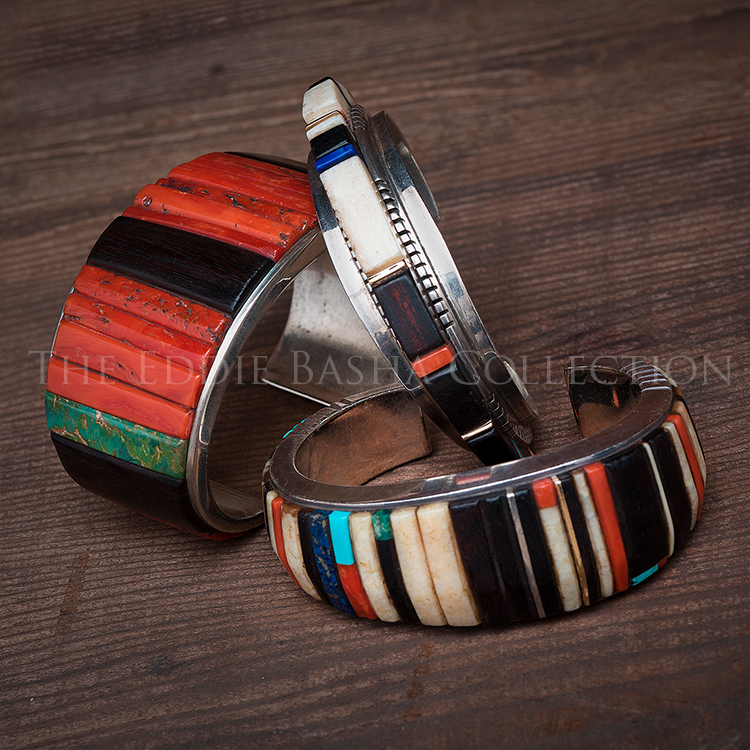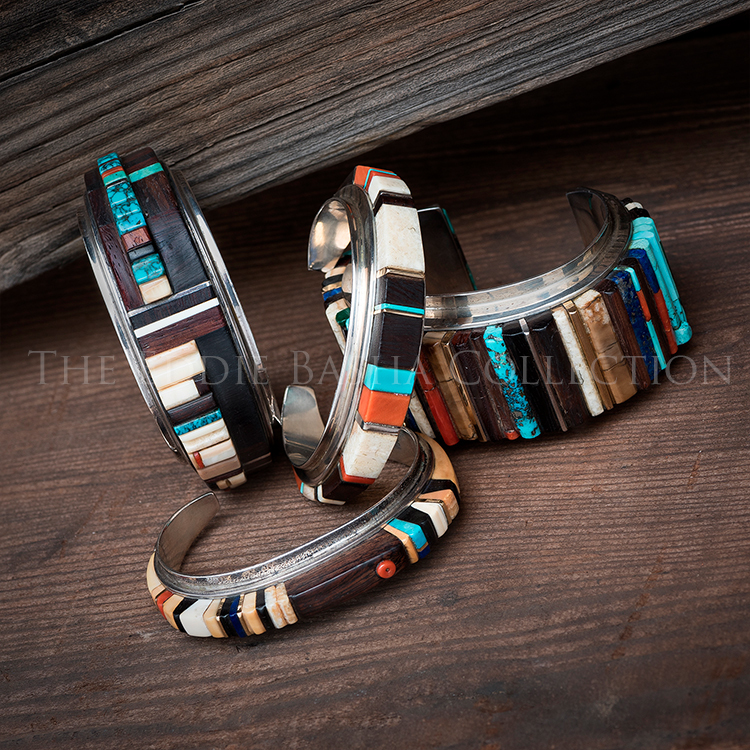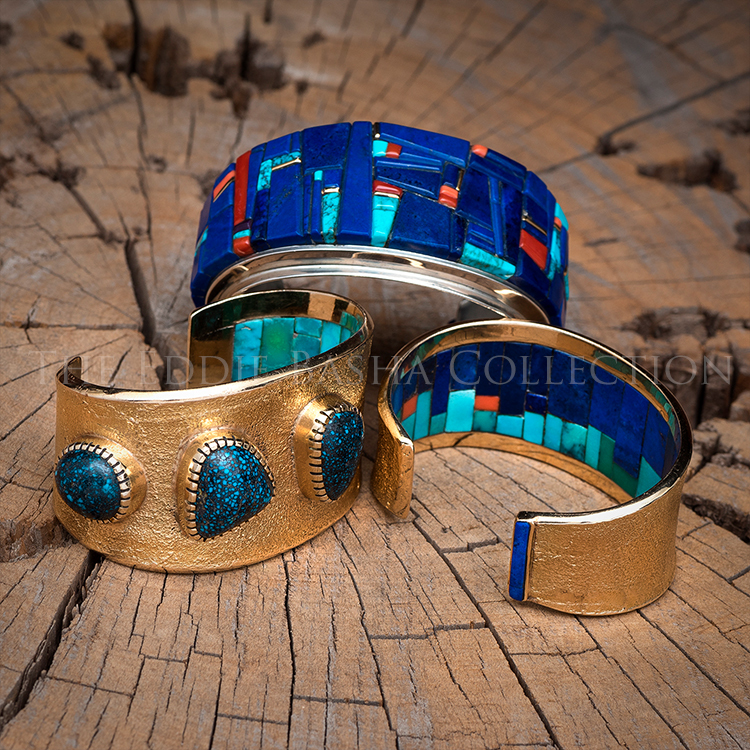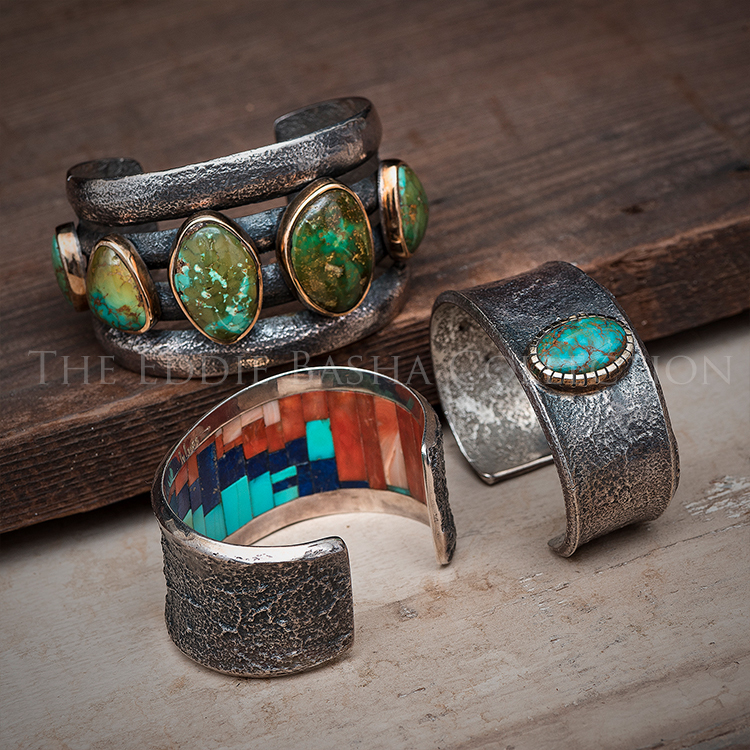Charles Loloma
(1921-1991)
Following high school, Charles Loloma apprenticed under Fred Kabotie and Renen d’Harnoncourt executing murals at the Museum of Modern Art in New York City and in San Francisco at the Federal Building for the 1939 Golden Gate Exposition. Following his service in the US Army (1941-1945), the GI Bill made it possible for him to study ceramics in college. While there, he received a fellowship from the Whitney Foundation to research ceramics on the Hopi Reservation (1949-1951). He and his wife opened a pottery shop in Scottsdale becoming the first residents of the successful Kiva Craft Center founded by Lloyd Kiva New.
In 1955, he turned his creative efforts toward jewelry and gradually it took precedence over his Lolomaware pottery line. Simultaneously he taught at the University of Arizona in Tucson and at Arizona State University in Tempe. At the UofA, he assisted in the launch of the Rockefeller Foundation Southwest Indian Art Project. When the Institute of American Indian Arts (IAIA) in Santa Fe was founded in 1962, Loloma and Kiva New were appointed heads of Plastic Arts and the Student Art Sales Department. Despite the teaching demands, Loloma continued working on his jewelry and in 1963 he had a very successful Paris show. By 1966, he devoted all of his time to perfecting his jewelry designs and began studio construction on a rocky knoll near his Hotevilla birthplace which accorded him panoramic views of the valleys and mesas of his homeland.
Charles Loloma was arguably the most influential American Indian jeweler of the twentieth century; an artist of astonishing creative energy who received worldwide acclaim as a jeweler, ceramist, painter, and poet. He broke down the barriers of regionalism and helped give contemporary American Indian art worldwide recognition. He traveled extensively and seemed comfortable among affluent art connoisseurs. His bold, innovative designs, atypical jewelry techniques and use of unusual materials departed dramatically from Hopi cultural beliefs, yet he was intensely traditional and served as a religious leader in his native community and maintained a deep reverence for Hopi beliefs and ceremonies. He lived by the Hopi calendar, its cycles of birth, death, and regeneration. His work although accepted with open arms by international and acclaimed critics, suffered a backlash for its untraditional aesthetic from his own people, “it’s nice, but it’s not Indian.” Loloma used unconventional materials at the time like sugilite, lapis, ivory, gold, pearls, diamonds, and even wood. Unlike most Indian jewelers at the time, he used turquoise only to accent his pieces. (Eventually, his work was accepted by his culture.) With innovation as his guide, he created pieces that expanded traditional jewelry boundaries with eloquent designs, inlay of abstract shapes and various heights, and ‘inner gems’ on the interior of some of his pieces expressing his belief that “people have inner gems.”
He was also a gentle man who enjoyed people and cared deeply about their responses to his jewelry. When asked how he would want to be remembered, he simply remarked, “What I’d like to be known for is beauty.” Significantly, “Loloma” translates to “Beauty” in the Hopi language.




